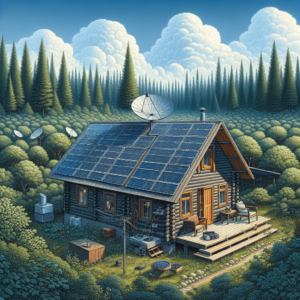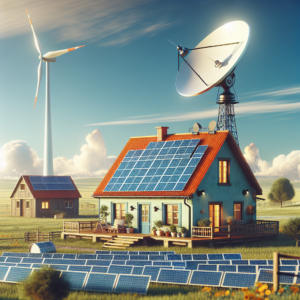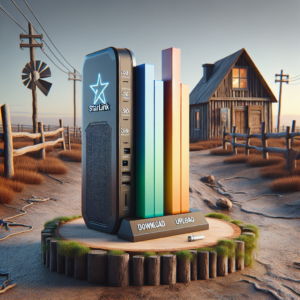
When it comes to living big in a small space, the efficiency of your energy source isn’t just a luxury—it’s a necessity. Tiny homes, often celebrated for their simplicity and sustainability, offer a unique challenge when it comes to power. Solar energy stands out as a solution that fits the ethos of tiny living: it’s clean, renewable, and, when done right, can provide all the energy you need without the bulk of traditional utilities.
Key Takeaways
Solar power is an ideal energy source for tiny homes, offering environmental and financial benefits.
To determine your energy needs, calculate your daily power consumption and consider your lifestyle habits.
Choosing the right solar panels involves assessing your roof space and deciding between portable and fixed options.
Efficient use of space and sunlight is crucial, requiring smart layout and strategic panel placement.
State and federal programs may offer financial incentives to help with the transition to solar power.
Shining a Light on Tiny Home Solar Solutions
Embracing solar power for your tiny home isn’t just about slapping a few panels on the roof and calling it a day. It’s about understanding your specific needs, the unique constraints of your space, and how to harness the sun’s energy most effectively. Let’s dive into the solar solutions that can light up your tiny home life.
Key Benefits of Going Solar in Tiny Homes
First things first, let’s talk about why solar energy and tiny homes are a match made in heaven. Solar power slashes utility bills, reduces your carbon footprint, and, with the right setup, can give you the freedom to live off-grid. Plus, it’s a renewable resource, which means you’re not just saving money—you’re also protecting the planet.
Real-Life Impact: How Tiny Home Owners Benefit from Solar
Take Sarah and John, for example. They opted for solar panels on their 250-square-foot tiny home. Not only did they cut their energy bills by 80%, but they also gained the ability to travel without worrying about power hookups.
Understanding Your Tiny Home’s Energy Needs
Before you start dreaming of solar panel arrays, it’s crucial to get a grip on how much energy you actually use. Every appliance, every light bulb, and even your phone charger contributes to your daily consumption.
Calculating Your Energy Consumption
Here’s what you’ll need to do: List every electrical device you use, note down how many watts each one consumes, and multiply that by the number of hours you use it each day. Add it all up, and you’ve got a rough estimate of your daily wattage needs.
Matching Solar Panel Capacity to Your Lifestyle
Living in a tiny home doesn’t mean sacrificing the comforts of modern life. It means being smart about which comforts you choose and how you power them. Once you’ve got your energy consumption figured out, you can start looking for solar panels that match your lifestyle. If you’re a digital nomad, for instance, you’ll want a system that can keep your gadgets charged no matter where you roam.
Smart Layouts for Solar Efficiency
Designing a tiny home with solar efficiency in mind starts with the layout. The goal is to maximize the use of natural resources—sunlight, in this case—while minimizing waste and inefficiency. It’s a delicate balance, but with thoughtful design, it’s entirely achievable.
The layout of your tiny home should take into account the path of the sun throughout the day and the changing of seasons. Windows should be placed strategically to allow for maximum natural light, reducing the need for artificial lighting. Insulation plays a key role too, as it helps maintain a comfortable temperature inside, reducing heating and cooling needs.
Maximizing Natural Light in Tiny Homes
Natural light doesn’t just reduce the need for electric lights; it also heats your space and creates an open, airy feel—even in the smallest of homes. Use skylights, large windows, and reflective surfaces to bounce light around and illuminate every corner of your home. Remember, more natural light means less reliance on your solar power system, stretching your energy further.
Strategic Placement of Panels for Optimal Energy Harvesting
Where you place your solar panels is as important as the panels themselves. You want to catch as many rays as possible, which usually means mounting them on the roof at the optimal angle. In the Northern Hemisphere, panels should face true south, while in the Southern Hemisphere, they should face true north. The angle of the panels should be equal to the latitude of your location to maximize sun exposure year-round.
Getting Creative with Installation
With space at a premium, tiny home owners need to get creative with their solar panel installations. You might not have a large roof, but perhaps you have a side yard, a fold-out panel system, or even a separate solar shed. The key is to think outside the traditional setup and find innovative ways to capture solar energy.
Innovative Solutions for Panel Mounting
Consider a multi-use structure where your solar panel not only generates power but also serves as an awning or a porch roof. Adjustable mounts can also be a game-changer, allowing you to tilt your panels with the seasons and track the sun’s movement for maximum efficiency.
Integrating Solar Power with Tiny Home Design
Integrating solar power into the design of your tiny home doesn’t just mean installing panels on the roof. It means considering how every aspect of your home can contribute to energy efficiency. From choosing energy-efficient appliances to installing LED lighting and using smart home technology, every detail counts.
Battery Storage and Energy Management

Having a reliable battery storage system is crucial for making the most of your solar setup. Batteries allow you to store the energy you generate during the day for use at night or during cloudy weather. They’re the backbone of your solar system, ensuring you have power when you need it.
For example, Emily and Mark installed a lithium-ion battery system in their tiny home. It’s lightweight, has a long lifespan, and maintains a high level of efficiency, making it perfect for their off-grid lifestyle.
But it’s not just about having batteries; it’s about managing your energy smartly. Monitoring systems can help you keep track of your energy production and consumption, so you can adjust your usage as needed and avoid running out of power.
Choosing the Right Battery System for Your Solar Setup
When selecting a battery system, you need to consider capacity, lifespan, and type. Lead-acid batteries are more affordable but require regular maintenance and have a shorter lifespan. Lithium-ion batteries are pricier but offer a longer lifespan, higher efficiency, and require less maintenance. The choice depends on your budget, space, and energy needs.
Smart Energy Use: How to Stretch Your Solar Power Further
Stretching your solar power means being intentional with your energy use. Use appliances during the day when your panels are generating power, and switch to low-energy modes at night. Invest in energy-efficient appliances and be diligent about turning off lights and electronics when they’re not in use.
Most importantly, regular maintenance of your solar system is key to ensuring it runs at peak efficiency. Clean your panels regularly to remove dirt and debris that can block sunlight, and have your system checked by a professional at least once a year.
Solar Solutions Beyond Electricity
Maximizing efficiency in small spaces isn’t limited to electricity. Solar energy can also be used for heating water and cooking, further reducing your reliance on traditional power sources.
Solar Water Heaters: Harnessing the Sun for Your Hot Showers
Solar water heaters are a fantastic way to use the sun’s energy to heat your water. They come in various designs, from simple batch heaters to more complex closed-loop systems. Not only do they provide you with hot water, but they also reduce the strain on your electrical system.
Remember, the goal is to create a sustainable, self-sufficient home that aligns with the values of tiny living. With the right solar solutions, you can live comfortably, reduce your environmental impact, and enjoy the freedom that comes with generating your own power. Keep these tips in mind, and you’ll be well on your way to maximizing efficiency in your tiny home solar solution.
Solar Water Heaters: Harnessing the Sun for Your Hot Showers
Imagine stepping into a warm shower, knowing the water was heated by the sun’s rays. Solar water heaters can make this a reality in your tiny home. They’re efficient, cost-effective over time, and reduce your carbon footprint. You can choose from passive systems, like batch heaters, which are ideal for warmer climates, or active systems, which are better suited for colder areas. With these systems, you’re not just saving energy; you’re also ensuring a steady supply of hot water come rain or shine.
Solar Cooking: Eco-Friendly Meal Preparation
Now, let’s take your solar solution beyond heating and lighting. Solar ovens harness the sun’s energy to cook food, offering a unique way to prepare meals without propane or electricity. They’re portable, require no fuel, and produce zero emissions. On a sunny day, a solar oven can reach temperatures hot enough to bake bread or cook a stew. It’s a game-changer for those looking to live sustainably in a tiny home.
State and Federal Programs to Support Your Transition
Transitioning to solar power is a smart move, and the good news is you might not have to foot the entire bill yourself. Many state and federal programs offer incentives to encourage the adoption of renewable energy. These can come in the form of tax credits, rebates, and grants, making solar solutions more accessible to everyone.
Tax Incentives and Subsidies for Solar Power Adoption
For example, the federal Investment Tax Credit (ITC) allows you to deduct a percentage of your solar energy system’s cost from your federal taxes. Some states offer additional incentives like cash back, property tax exemption, or even free solar panels for low-income households. It’s worth researching the incentives available in your area to see how they can make your transition to solar more affordable.
Programs Aiding the Installation of Solar Solutions in Tiny Homes
There are also specific programs aimed at tiny homeowners. These can range from educational resources to help you understand the best solar practices for tiny living, to subsidies that reduce the cost of installation. Organizations like GRID Alternatives work to make renewable energy technology and job training accessible to underserved communities, including those opting for tiny homes.
FAQ
How do I determine the number of solar panels I need for my tiny home?
Determining the number of solar panels you need is a straightforward process. Start by calculating your average daily energy usage in kilowatt-hours (kWh). Then, consider the average sun hours your location receives. Divide your daily kWh by the sun hours to get the kW size of the system you need. Finally, divide this number by the wattage of the solar panels you’re considering to find out how many you’ll need.
Are solar panels for a tiny home cost-effective in the long term?
Absolutely. While the initial investment may seem significant, solar panels typically pay for themselves over time through reduced or eliminated energy bills. Plus, they can increase the value of your home and offer protection against rising energy costs. With low maintenance costs and the potential for financial incentives, solar panels are a wise long-term investment for your tiny home.
Can I install solar panels myself, or do I need a professional?
Installing solar panels can be a DIY project, but it requires a solid understanding of electrical systems and local building codes. For those who are less experienced, hiring a professional ensures that your system is safely and properly installed, and may also be required to validate warranties or qualify for certain incentives.
How does bad weather affect solar panel efficiency?
Solar panels can withstand most weather conditions, but their efficiency can be affected by extreme weather. Heavy snowfall can block sunlight, while hail can cause physical damage. However, most panels are designed to be highly durable, and some loss of efficiency due to weather can be mitigated by proper installation and angle adjustment.
Do I need special insurance for solar-powered tiny homes?
It’s a good idea to talk to your insurance provider about your solar system. While your home insurance may cover your solar panels, you might need to increase your coverage to account for the value of the system. Additionally, some insurance companies offer green energy incentives that could benefit you.
Use energy-efficient LED lighting to reduce power consumption.
Consider a solar water heater to save on heating costs and reduce electricity use.
Investigate state and federal incentives that could lower the cost of your solar system.
Maintain your solar panels regularly to ensure they operate at peak efficiency.
Think creatively about solar panel placement to make the most of your tiny space.
Embracing solar solutions for your tiny home is not only about being kind to the environment; it’s also about embracing a lifestyle that is both liberating and sustainable. With the right approach and a bit of planning, you can enjoy the benefits of solar power and make the most of your compact living space.







